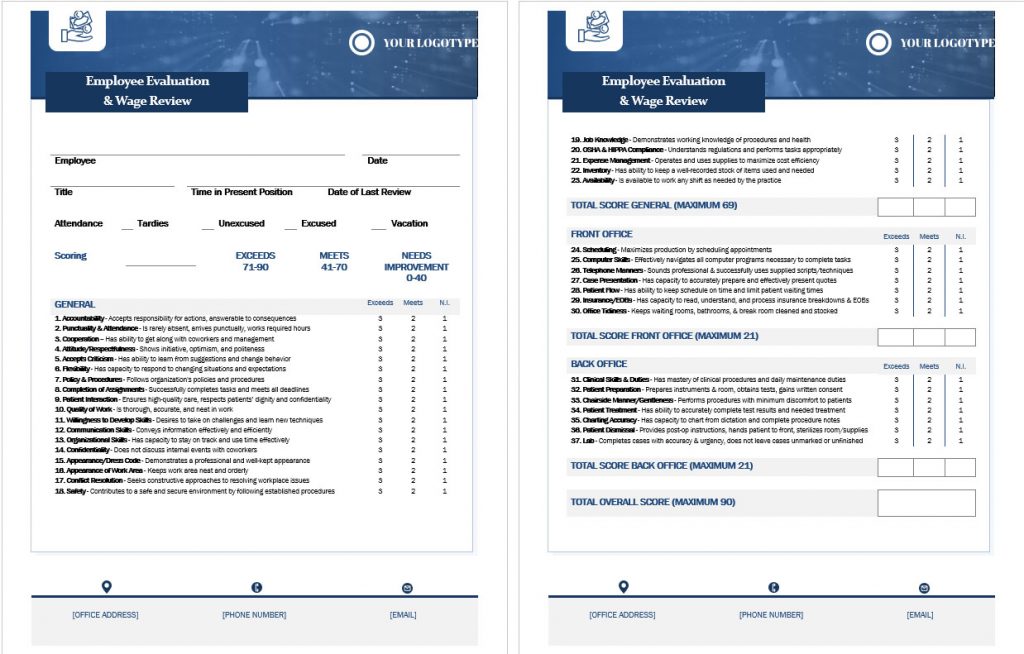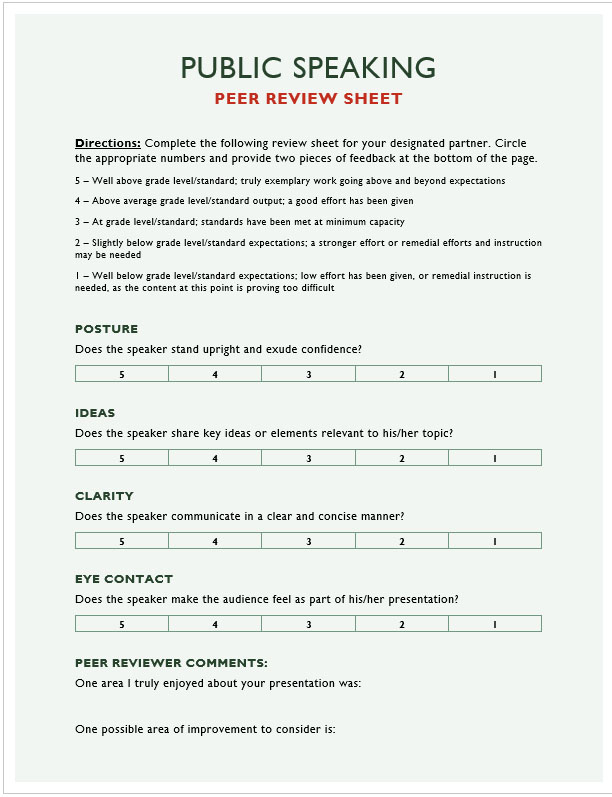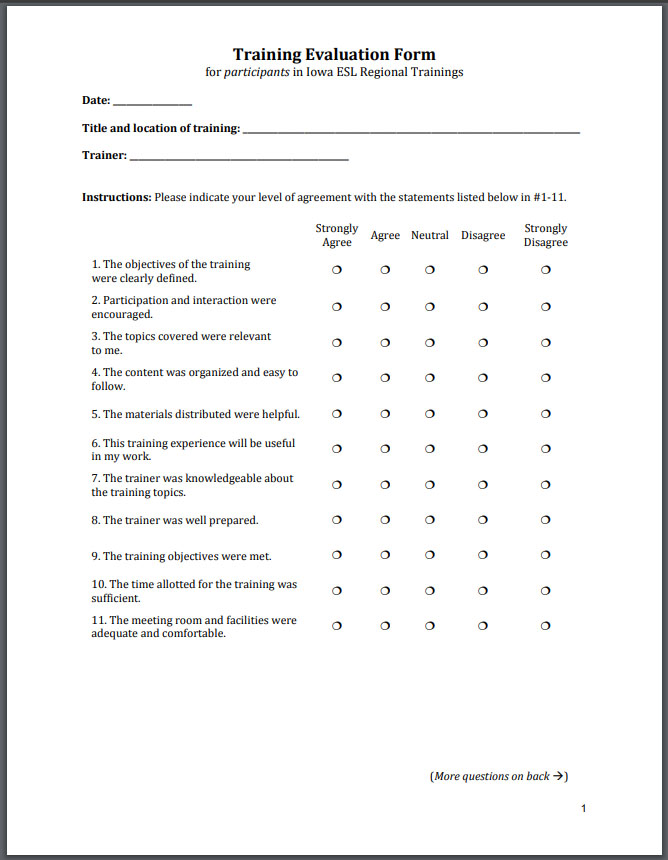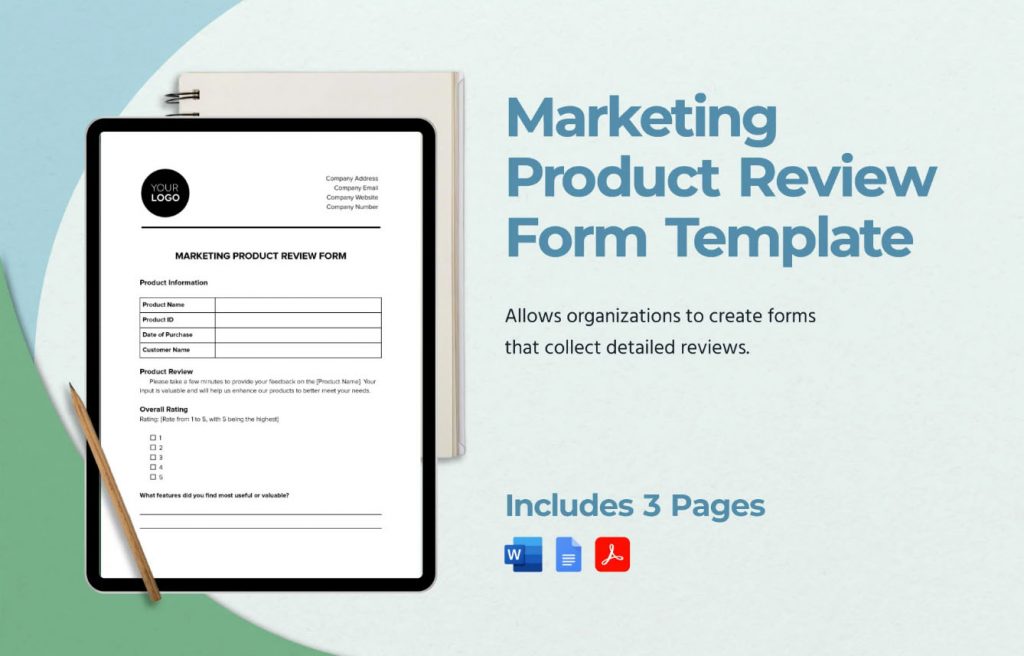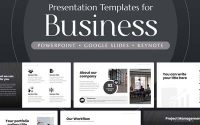In the realm of performance evaluation and feedback, review form templates play a pivotal role in structuring and streamlining the process. These templates serve as frameworks for gathering insights, identifying strengths and areas for improvement, and fostering professional growth. In this article, we explore the significance of review form templates and offer insights into crafting effective ones.
Understanding Review Form Templates
Review form templates are standardized documents designed to collect feedback and assess various aspects of an individual’s performance. Whether it’s an employee appraisal, a project evaluation, or a performance review, these templates provide a structured format for capturing qualitative and quantitative feedback. They typically include sections for rating performance criteria, providing comments, and setting goals for future development.
Tailoring to Specific Needs
One of the key advantages of review form templates is their adaptability to different contexts and requirements. Organizations can customize these templates to align with their specific goals, values, and evaluation criteria. Whether it’s incorporating competencies relevant to a particular role or emphasizing organizational values, customization ensures that the review process is meaningful and relevant to both the individual and the organization.
Promoting Fairness and Consistency
Consistency is crucial in any evaluation process, and review form templates help maintain a standardized approach to performance assessment. By clearly defining evaluation criteria and providing uniform rating scales, these templates minimize bias and ensure fairness across assessments. Consistent use of review form templates also facilitates comparisons over time, enabling organizations to track progress and identify trends in performance.
Facilitating Constructive Feedback
Effective feedback is constructive, actionable, and specific. Review form templates guide reviewers in providing feedback that is focused on observable behaviors and outcomes. By prompting reviewers to provide examples and suggestions for improvement, these templates encourage meaningful dialogue and facilitate growth-oriented discussions between reviewers and recipients. Additionally, structured feedback helps individuals understand their strengths and areas for development more clearly, leading to targeted professional development efforts.
Driving Professional Development
Review form templates are not just tools for assessment; they also serve as roadmaps for professional development. By including sections for setting goals and action plans, these templates encourage individuals to reflect on their performance and chart a path for growth. Clear and measurable goals outlined in the review form provide a framework for ongoing development efforts, empowering individuals to take ownership of their career progression.
Enhancing Performance through Effective Review Form Templates
In the fast-paced world of work, feedback and performance evaluation are essential for driving continuous improvement and professional growth. Review form templates provide a structured approach to gathering feedback, promoting fairness, and facilitating constructive dialogue. As organizations strive to optimize their feedback processes, well-designed review form templates emerge as invaluable tools for fostering a culture of excellence and driving individual and organizational success.
Employee Review Form Templates
Public Speeking Review Template
Training Review Form
Marketing Reviw Form Template
Frequently Asked Questions:
As organizations strive for excellence and continuous improvement, review form templates play a crucial role in gathering feedback and evaluating performance. Here are some frequently asked questions about review form templates:
1. What is a review form template?
A review form template is a pre-designed document or digital form used to collect feedback on various aspects such as employee performance, customer satisfaction, product quality, or project outcomes. It typically includes standardized questions, rating scales, and open-ended fields to gather comprehensive feedback.
2. How do review form templates benefit organizations?
Review form templates streamline feedback processes by providing a structured framework for evaluation. They enhance consistency and objectivity, facilitate customization to suit specific needs, save time and resources by eliminating the need to create evaluations from scratch, and drive actionable insights for continuous improvement.
3. What types of review form templates are available?
There are various types of review form templates tailored to different purposes, including employee performance reviews, customer satisfaction surveys, product or service evaluations, project assessments, and peer evaluations. Each type of template is designed to collect feedback relevant to its specific domain.
4. How can I customize a review form template for my organization?
Most review form templates are customizable to accommodate the unique goals, objectives, and evaluation criteria of an organization. You can modify the template by adding or removing questions, adjusting rating scales, incorporating branding elements, or tailoring it to suit specific departments or roles within the organization.
5. Are digital review form templates better than paper-based ones?
Digital review form templates offer several advantages over paper-based ones, including easier distribution, automated data collection and analysis, improved accessibility for remote or distributed teams, and reduced environmental impact. However, the choice between digital and paper-based templates depends on the organization’s preferences, resources, and technological infrastructure.
6. How often should review form templates be used?
The frequency of using review form templates depends on the organization’s feedback cadence and the specific context of evaluation. Some organizations conduct regular performance reviews on an annual or semi-annual basis, while others may use review form templates for continuous feedback and improvement on projects or processes.
7. How can I ensure the effectiveness of review form templates?
To ensure the effectiveness of review form templates, organizations should involve stakeholders in the design process, provide training on how to use the templates effectively, solicit feedback on the templates’ usability and relevance, and regularly review and update them to reflect changing needs and priorities.
8. Can review form templates be used for performance improvement plans?
Yes, review form templates can be used as part of performance improvement plans (PIPs) to identify areas for development, set goals and objectives for improvement, and track progress over time. Customized review form templates can help managers and employees collaborate on constructive feedback and action plans to address performance issues effectively.
9. Are there any best practices for implementing review form templates?
Some best practices for implementing review form templates include aligning them with organizational goals and values, ensuring clarity and simplicity in the questions and instructions, providing training and support for users, promoting transparency and fairness in the evaluation process, and using feedback gathered from the templates to drive meaningful improvements.
10. Where can I find review form templates for my organization?
Review form templates can be found through various sources, including human resources departments, online template libraries, professional organizations, or software platforms that specialize in performance management or feedback tools. It’s essential to choose templates that are relevant to your organization’s needs and adaptable to its unique context.
